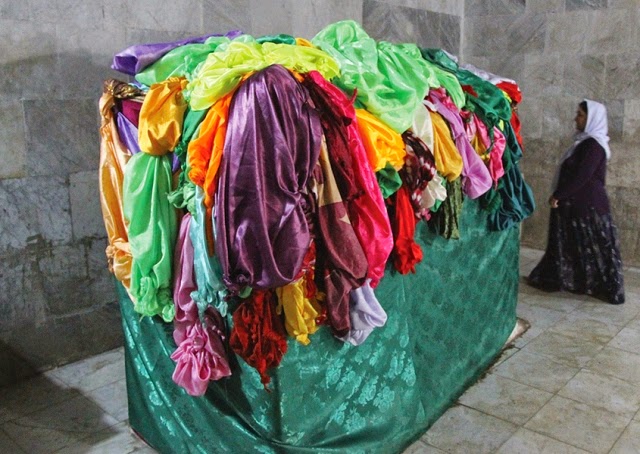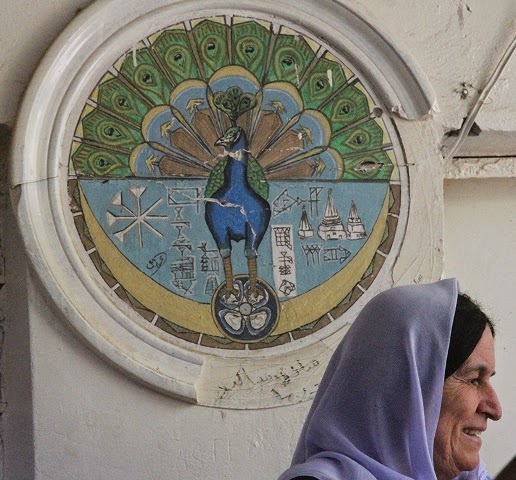
|
|||||||||
|
| |||||||||
Lalish: The Yezidi Spiritual Heartland
Lalish is the spiritual heartland of the Yezidis, a place where they find both spiritual solace and physical protection during times of invasion and persecution. During the recent assaults on the Yezidis by Saddam Hussein and the Kurdish Moslems many Yezidis sought short and long-term refuge in Lalish. The sacred history of Lalish begins with the arrival of the Yezidis’ patron deity Tawsi Melek, the Peacock Angel, who first arrived on Earth when the planet was still barren and constantly besieged by earthquakes and volcanoes, Tawsi Melek was sent to Earth to remedy the situation and make the planet one of the most beautiful in the universe. Landing as a peacock at Lalish, Tawsi Melek succeeded in stopping the Earth’s quaking and then he covered the planet with his “rainbow” peacock colors. It is believed that during the sacred Autumn festival in Lalish Tawsi Melek still visits the place along with six Great Angels of the Yezidis. by Pavol DemešThe recent emergence of the radical so-called Islamic State in parts of Iraq and Syria and its cruel exercise of power has created outrage around the world. Last year, a broad-based international coalition was created with the aim of eliminating this dangerous terrorist organization. One key impulse for more robust international military involvement against the Islamic State group last fall was its ferocious attack on the Yazidis, a small and little-known ethno-religious community living in northern Iraq. Horror stories of Islamic State fighters driving this minority from their homes to the mountains where hundreds of them died of hunger and dehydration, killing Yazidi men en masse, and raping and enslaving Yazidi women and girls showed the brutal order of the group’s self-declared caliphate. Although the Kurdish-speaking Yazidi have been subject to mistreatment for centuries, they were never under such an existential threat as they have been during this recent rise in Islamic fundamentalism. Members of this ancient monotheistic religion, with roots in Zoroastrianism, are special targets for Islamic State extremists who are trying to “purify” their captured territories. Muslim radicals view Yazidi as apostates worshiping the devil. They force them to convert to Islam; those who refuse are killed. Although recent victories of the Iraqi armed forces, helped by the United States and other allies, over the Islamic State fighters has liberated many Yazidis, the community’s future is still dire. It is estimated that before the Islamic State attacks, there were about 600,000 Yazidi living in Kurdish villages and cities. So far, tens of thousands of them have fled the country or lost their homes, and thousands live in hard conditions in multiple refugee camps or on Mount Sinjar near the Syrian border. Without coordinated international efforts, the existence of this unique faith, which has survived for millennia, may disappear in front of our eyes. These photos were taken in Lalish, the most sacred pilgrimage site for the Yazidis, during the Chama festival in October 2013, very soon after the initial formation of the Islamic State group. I hope these images give a sense of this endangered community’s way of life.
Courtesy: The Transatlantic Academy of February 9th 2015
|






